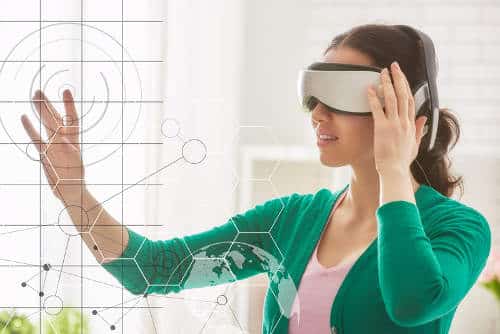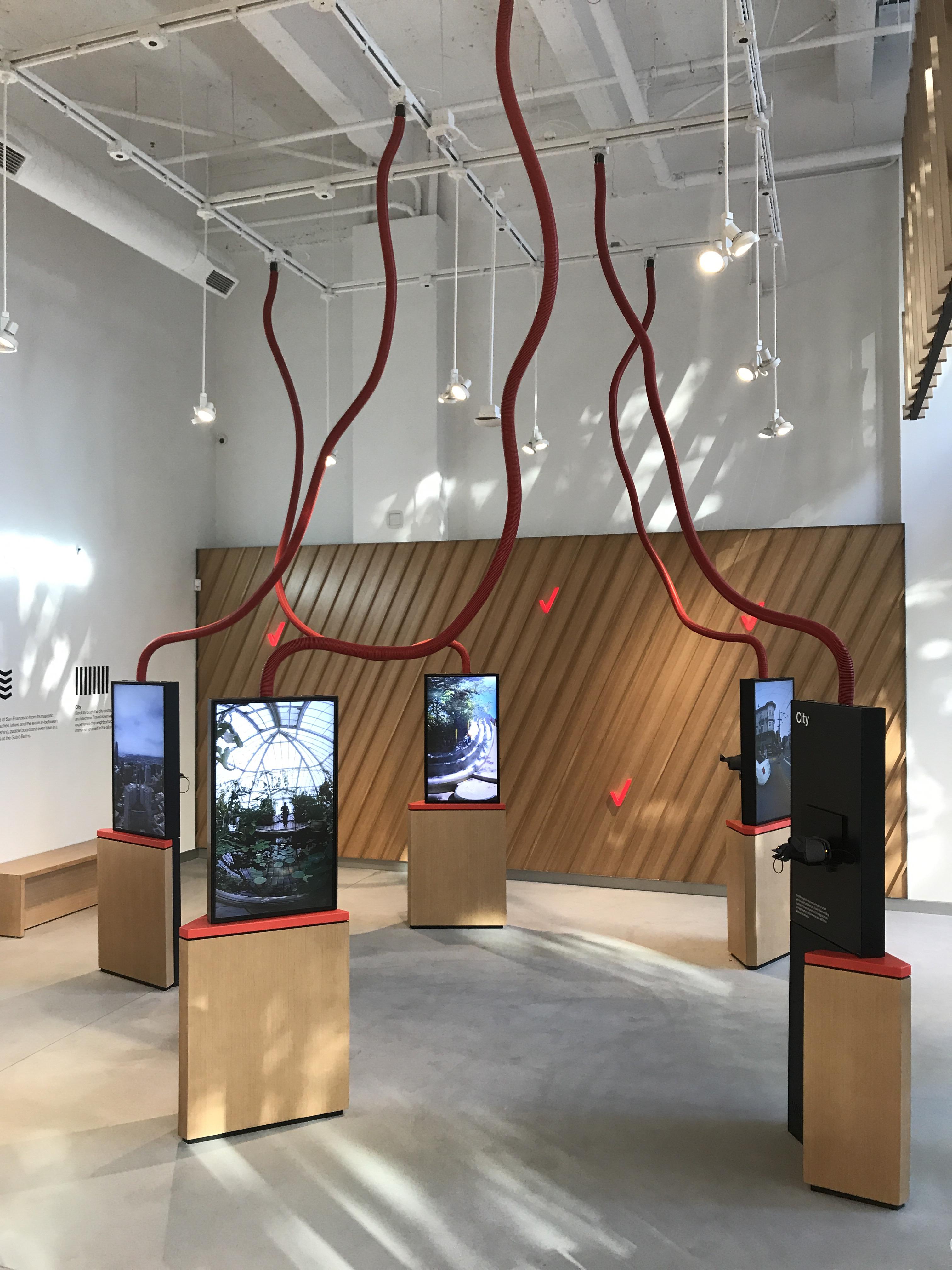
Although still in their relative infancy, augmented reality and virtual reality technologies promise to greatly expand the types of screen-based applications in the marketplace.
By Richard Slawsky contributor
A new dimension is about to be added to the world of customer-facing screens.
Retailers and other businesses are working to incorporate augmented reality and virtual reality to change the way consumers shop, industrial workers manufacture products and engineers design new devices. The technologies haven’t yet reached critical mass in the marketplace, but industry observers say it’s just a matter of time.
Although predictions of market size should always be taken with a grain of salt, a report by Menlo Park, Calif.-based consulting firm Digi-Capital pegs the AR/VR market as topping $108 billion by 2021, up from $3.9 billion in 2016.
Augmented reality is defined as a technology that superimposes a computer-generated image on a user’s view of the real world, thus providing a composite view. Although the concept has been around for several years, it gained widespread attention in mid-2016 with the smartphone-based game Pokemon Go. Players of the game used the smartphone’s GPS capabilities to locate and capture virtual creatures called Pokemon, which were visible when viewing real-world locations using the smartphone’s screen.
And virtual reality is the computer-generated environment typically entered via a headset that creates that world in front of the wearers’ eyes. Although the gaming market may be the prime driver for VR technology, retailers including Lowes, IKEA and Walmart are exploring VR for uses ranging from interior design to employee training.
VR solutions currently on the market include Facebook’s Oculus Rift and HTC’s VIVE. In addition, a number of solutions integrate a user’s smartphone into an add-on headset as a way to create the VR experience.
Early adopters setting the stage
Much of the movement to date in the AR space revolves around solutions that let consumers view how a particular product will look in their home before they make a buying decision.
Ashley Furniture, for example, debuted an iPad app in 2016 to help shoppers see how furniture pieces fit in existing spaces. Shoppers are able to move pieces around with the app to try various arrangements and to make sure furniture selections will fit with their existing pieces.
After a customer uses the iPad space configuration app, they can put on virtual reality headsets to experience the arrangements to make changes or select different pieces. Ashley worked with Kettering, Ohio-based Marxent Labs to develop the AR and VR customer tools.
“Augmented and virtual reality are essential to our growth and vision for the future,” said Ashley CEO Todd Wanek. “Our data shows that a combination of 3D visualization, seeing, touching and feeling actual products, combined with the consultation of our knowledgeable salespeople, will lead to a stand-apart customer experience that is location-flexible.”
In March, home improvement store Lowes introduced its “Holoroom How To” virtual reality skills-training clinic at several stores in Boston and Canada. The application purports to help customers can learn basic do-it-yourself skills, such as tiling a shower or refinishing a floor, in an interactive VR environment. The application is an extension of the retailer’s Holoroom tool, launched in 2014. That application allowed users to visualize home improvement projects in a VR environment.
“During the past three years, we have been exploring real-life applications of augmented and virtual reality experiences to directly help our customers solve everyday problems,” Kyle Nel, executive director of Lowe’s Innovation Labs, said when Holoroom How-To was launched. “Our experience has shown that customers are embracing AR/VR as part of their home improvement journey, and now, we are using immersive VR to help our customers learn the required skills to complete challenging home improvement projects.”
And furniture retailer IKEA has partnered with Apple to develop an app for the next-generation iPhone that will let users place virtual selections from the company’s catalogue in whatever space they choose. For example, consumers will be able to hold their iPhone up in their living room and add virtual furniture to their existing décor. The app, slated to be released in the fall, is expected to include a feature that lets uses buy products from within the app itself.
“This technology makes it easier to make buying decisions in your own home, get inspired and try many different products, styles and colors in real-life settings with the swipe of your finger,” IKEA’s digital transformation leader Michael Valdsgaard said in a release. “I think that augmented reality and virtual reality will be a total game changer for retail in the same way as the internet. Only this time much faster.”
Supplementing the kiosk experience
Although many of the AR/VR applications hitting the market involve the use of smartphones or special headsets, there are plenty of opportunities for kiosks in the space.
Toymaker Lego, for example, has been deploying AR-enabled kiosks in its stores since 2010. Users hold a product box in front of the kiosk’s camera, and the screen displays a 3D image of the assembled toy on top of the box.
In the Asian market, trade publication Premium Beauty News reports that a Watson’s beauty supply store in Shanghai, China, has deployed a kiosk outfitted with augmented reality facial detection technology. The kiosks allows users to see how they would look with a variety of makeup products, including brands such as MaxFactor, Maybelline and Kate Cosmetics. The kiosks use augmented reality technology from Perfect Corporation.
And in conjunction with the March 2016 release of the movie “Batman v Superman: Dawn of Justice,” outdoor advertiser JCDecaux partnered with Roadshow Films to deploy kiosks in Sidney and Brisbane, Australia, that enabled users to project their face onto the outfit of their chosen superhero and engage in a battle with the other character.
Users could adjust the size of their facial image to fit the costume and share images from the kiosks on social media platforms.
But while applications for AR-enabled kiosks may only be limited by the imagination of content creators, their use with virtual reality technology isn’t yet clear.
In addition to the higher cost of VR solutions relative to traditional kiosks, hygiene concerns related to sharing headsets in a public deployment have made some potential users wary.
VR companies are working to address those concerns, though. Oculus Rift and Samsung VR have created removable face foam for their headsets, while Japanese companies have been selling disposable VR headset hygiene masks.
But while kiosks may only be a small part of the VR equation, the potential for VR technology itself seems great, with new applications hitting the market nearly every day.
SeaWorld in Orlando, Fla., for example, has incorporated a virtual reality component with its Kraken Unleashed roller coaster. Riders have the option of wearing a virtual reality headset that creates the impression of the coaster traveling under water and encountering a variety of sea life.
And many of the non-entertainment applications are being developed for working on machinery and/or training new employees. VR headsets can display an exploded 3D image of a car’s engine to detail maintenance procedures, while flight simulators can create a more immersive experience with the technology.
Retail giant Walmart plans to incorporate Oculus Rift VR headsets at its 200 training centers to help train new employees. The company got the idea after one of its employees saw the technology being used at a University of Arkansas football team practice.
Walmart’s testing indicates that associates who go through VR training retain what they’ve learned better than those who haven’t. Once the technology is fully rolled out more than 140,000 associates each year will have VR as part of their training experience, company officials said.

